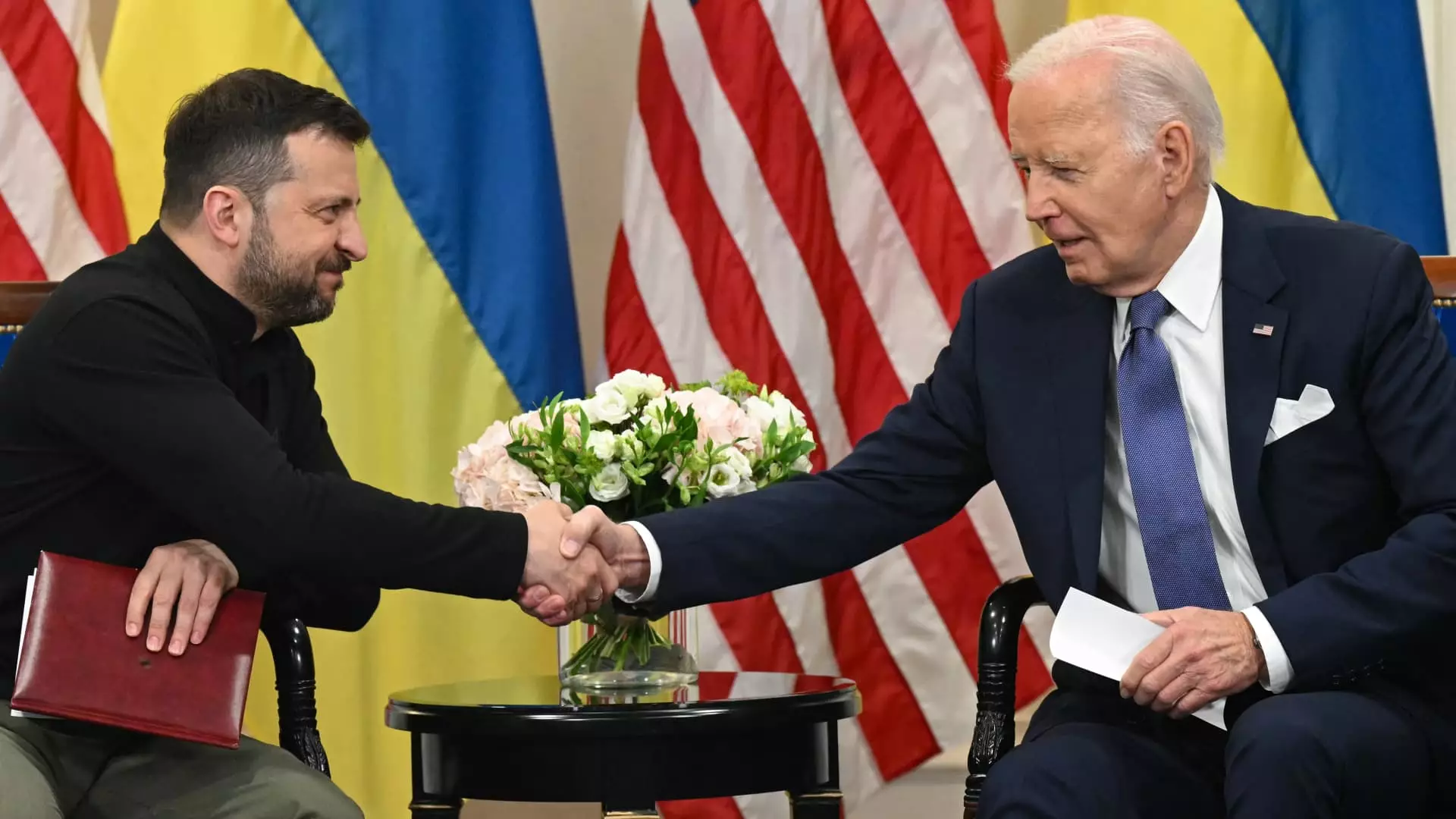As President Joe Biden approaches the final weeks of his administration, the United States has unveiled a significant package of nearly $6 billion in additional military and budgetary aid for Ukraine. This announcement comes at a pivotal moment, as Biden seeks to bolster the war-torn nation just as President-elect Donald Trump prepares to take office. The urgency is palpable, reflecting both a strategic commitment to Ukraine’s defense against Russian aggression and a concern over the future of U.S. support once Trump assumes the presidency.
The recent aid includes $2.5 billion earmarked specifically for security assistance, alongside $3.4 billion in crucial budget support for Ukraine. This budgetary assistance is particularly impactful given the backdrop of relentless Russian assaults on Ukrainian infrastructure and civilian populations. In a statement, Biden emphasized that the U.S. will persist in its efforts to bolster Ukraine’s defenses. This commitment underscores the urgency of providing immediate military capabilities to Ukraine while also considering longer-term requirements such as air defense systems and artillery—details that reflect a comprehensive understanding of the situation at hand.
The funding break-down reveals that $1.25 billion is being drawn directly from U.S. stockpiles, while an additional $1.22 billion is coming through the Ukraine Security Assistance Initiative (USAI). The latter signifies a pivot towards procurement from defense contractors instead of immediate stockpiling, which can create logistical delays in supplying the necessary equipment to Ukrainian forces. This approach highlights an awareness of the complexities inherent in military aid during protracted conflicts, as getting material support to the battlefield in a timely manner remains a critical factor in sustaining Ukraine’s defense.
This latest infusion of assistance marks a notable milestone in U.S. engagement with Ukraine, totaling approximately $175 billion in aid since Russia invaded the country nearly three years ago. This figure marks an extraordinary level of commitment, signaling the United States’ strategic interest in stabilizing the region and countering Russia’s advances. However, uncertainties loom on the horizon as Biden’s term draws to a close. Trump’s stance on foreign intervention—particularly his skepticism toward continued financial support for Ukraine—raises questions about the future trajectory of U.S. involvement. During his campaign, Trump hinted at a preference for a rapid resolution to the conflict, advocating for a more isolationist approach.
The dynamics on the battlefield reveal troubling developments, including operational collaborations between Russia and North Korean forces. Reports suggest that North Korean troops are incurring heavy casualties, which might ultimately alter the strategic calculus of Moscow’s military objectives. The infusion of such resources from North Korea, despite high casualty rates, could indicate desperation on Russia’s part but also reflects the increasing scale of the conflict. Biden’s promise of new military resources, such as artillery and armored vehicles, highlights not just an urgent response to current needs but also a commitment to ensuring Ukraine’s resilience through the winter months, a critical time for military engagement.
Looking forward, the political climate surrounding aid to Ukraine remains contentious. The newly empowered Republican majority in Congress may exert pressure to limit the extent of future support, leading to potentially dire consequences for Ukraine’s efforts to maintain sovereignty and government functionality. Biden officials including Treasury Secretary Janet Yellen underscore the importance of sustaining economic aid to support public services and government salaries, which are crucial as the nation navigates ongoing challenges. The broader message emphasizes that Ukraine’s success is entwined with U.S. national interests, invoking a sense of urgency to continue diplomatic and economic pressure against Russia.
The recent announcement of support underscores not only Biden’s strategic foresight but also highlights the fleeting nature of political commitments. The prospect of a new administration under Trump presents an unpredictable variable, creating an atmosphere of urgency for both American leadership and Ukraine’s future on the battlefield. The coming weeks will be critical in determining both the nature and the extent of U.S. engagement as Ukraine continues its struggle for self-determination in the face of relentless aggression.


Leave a Reply